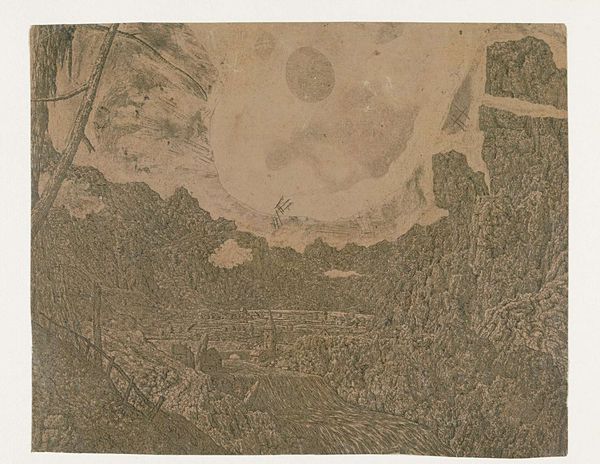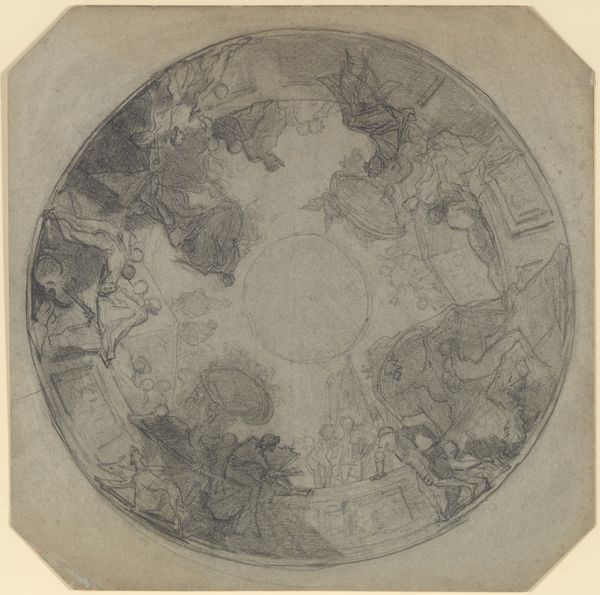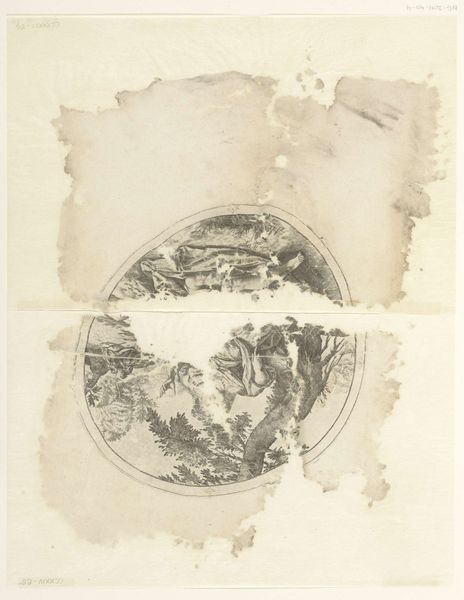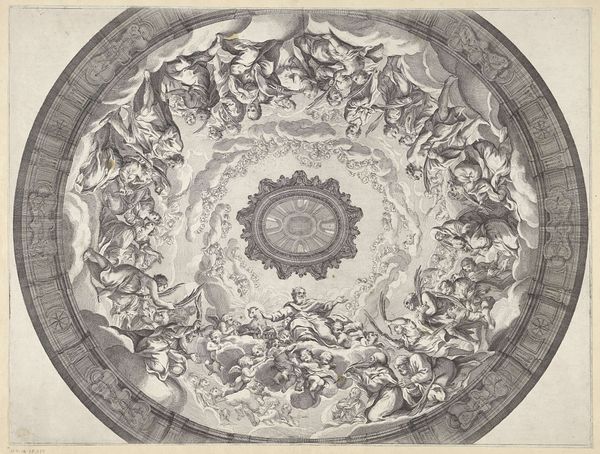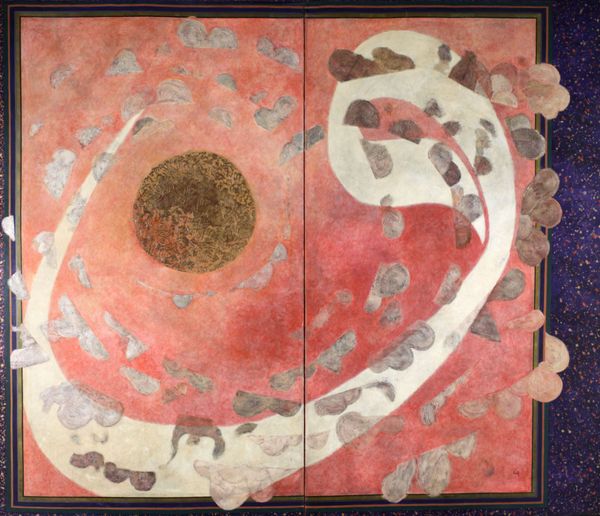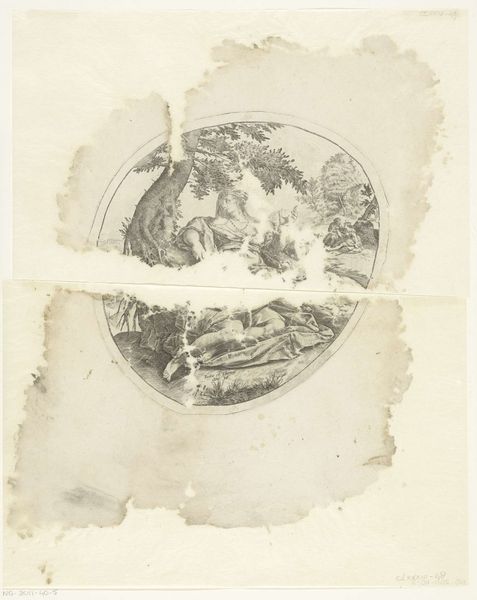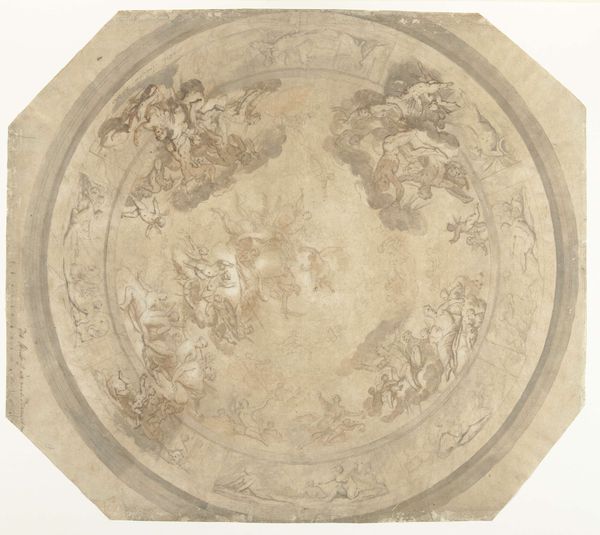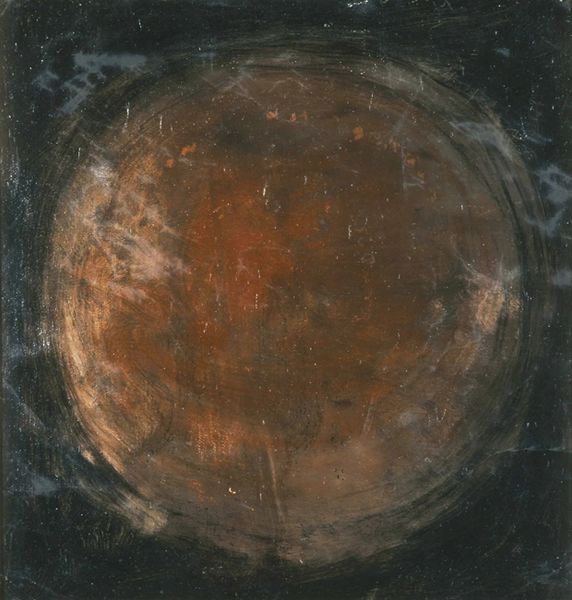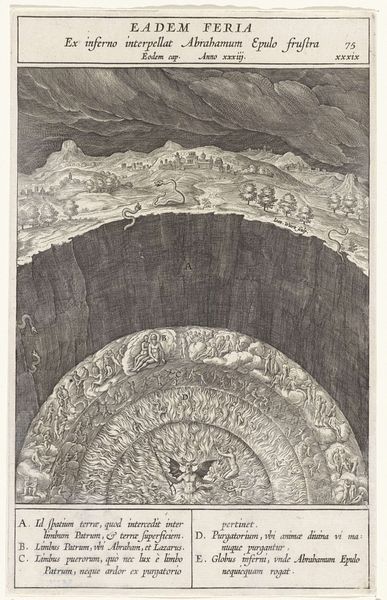
Dimensions: 195 x 220 cm
Copyright: Public domain
Editor: This is a section of Hieronymus Bosch’s "The Garden of Earthly Delights" from around 1500, currently at the Museo del Prado. What strikes me immediately is the use of tempera and oil paint; you can almost feel the textures used to depict this… spherical early world. What do you see in it? Curator: Beyond the immediately striking imagery, I’m drawn to the materiality itself. Bosch’s choice of oil paint allowed for incredibly detailed and layered depictions. The techniques employed, and where those pigments came from tells me about the commerce of the time. Consider also the physical support—wood panel. The lumber itself would have been a valuable material, requiring skilled labor for preparation. Editor: So, it’s about looking at the tangible aspects, not just the themes. The creation process really changes the artwork. Curator: Precisely. How the materials reflect the world in which Bosch worked is fascinating. This triptych wasn’t made in a vacuum. Consumption during the Early Renaissance certainly had an effect. Think about where Bosch obtained the lapis lazuli for those intense blues or the milling process needed to prepare and apply the paint. How would different workshops at the time have altered their practices? Editor: That makes me think about his patrons as well, the labour involved and all of the production...I guess there’s a whole world beneath the surface if we shift our focus. Thanks for helping me consider this, not just as art, but as labour and production. Curator: Indeed, a deep dive into these material realities makes it possible to read new narratives.
Comments
No comments
Be the first to comment and join the conversation on the ultimate creative platform.
